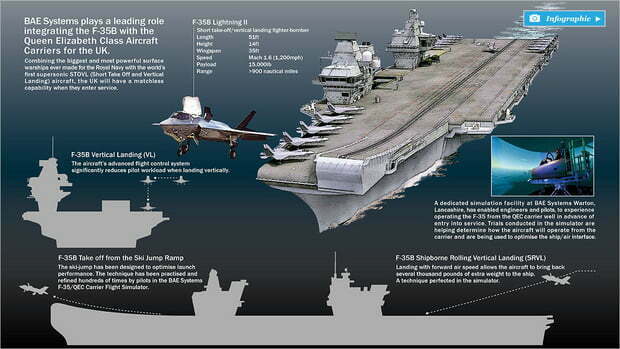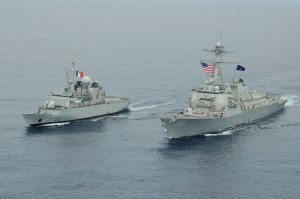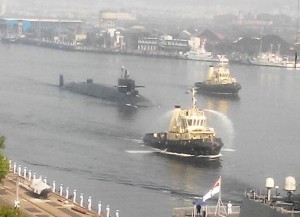2014-12-13 by Richard Weitz
This is the third and final part of the series on looking at the role of Kazakhstan with regard to nuclear security.
Renewing Nuclear Energy
During the past decade, Kazakhstan has dramatically increased its production and export of uranium.
From 2001 to 2009, the country’s uranium output grew from 2,000 to 13,900 tons. Geologists have identified about 50 uranium deposits, located mostly in south-central Kazakhstan.[1] In recent years, in-situ leach (ISL) mining has overtaken hard rock deposits as the main source of production.[2]
With a record output in 2009, Kazakhstan produced more uranium than any other country that year by increasing its national output by a remarkable 63% over 2008, which was 8,500 tons.
The increased production for 2009 resulted from new uranium mines beginning operations or expanding their capacities that year.[3]

Second only to Australia, Kazakhstan has more than 12 percent of global uranium reserves, or over 1.5 million tons.[4]
The country extracted approximately 22,500 tons (58.5 million pounds) of uranium (tU) in 2013, approximately 38% of global production for that year.[5] The previous year, Kazakhstan produced 20,900 tU, or 37% of global production, estimated at 55,700 tons in 2012.[6]
Kazakhstan’s share was somewhat less in 2011, when Kazakhstan accounted for 35% of global production, with 19,400 tons.[7]
Almost all of Kazakhstan’s uranium production is exported.
The main destinations are China, Japan, and Russia. The country’s own consumption of uranium will increase if the Kazakhstani government realizes its goals of expanding the domestic use of nuclear power and of becoming a producer of uranium fuel for other countries.
Foreign Minister Erlan Idrissov has called for a “global effort aimed at maintaining calm on uranium markets internationally so that all countries can get access to sources of nuclear energy.”[8]
Kazakhstan’s national nuclear energy company, KazAtomProm, aims to become the world’s largest miner and exporter of natural uranium.
KazAtomProm is a wholly state owned company, established in 1997, that manages indigenous uranium exploration and mining as well as the Kazakhstan government’s other commercial nuclear activities. The corporation employs about 25,000 people and had a net profit of 36 billion tenge ($200 million) in 2012. It owns about half the shares of all the uranium mining companies operating in Kazakhstan (all domestic equity); its operations produced 12,500 tons in 2012.[9]
In line with its expanding operations, KazAtomProm’s revenue has grown rapidly since 2008, reaching more than $2 billion in 2012.[10]In 2013, KazAtomProm’s production rose to 12,600 tons, with 10,200 tons covered by sales contracts.[11]
With current world uranium prices still depressed, KazAtomProm has scaled back earlier plans to raise uranium production or move up the fuel cycle rapidly.
In late 2013, its then Chairman Vladimir Shkolnik said that, “We’ve put the brakes on implementing uranium output expansions. The same goes for other elements of the fuel cycle.”[12]
The corporation will instead maintain its global market share and focus for a while on producing more rare earth elements, which are used in a variety of industrial applications, and other products.[13]
Meanwhile, KazAtomProm expects to increase Kazakhstan’s annual uranium production to increase by more than 180,000 tons to over 1.7 million tons by 2020.[14]
KazAtomProm also participates in the government’s Program for Development of Renewable Energy and supports research on solar energy, energy conservation, water desalination, medical research, and related projects.
Through joint ventures with Russia’s Intermix Met and several Japanese companies, KazAtomProm and Uranium One Holding are seeking to develop a cost-effective technology to extract scandium during the uranium production process.
The plan is to start producing scandium, a high-strength material used in aircraft, rockets, satellites, robotics and laser equipment—by 2016.[15]
Uranium One Inc. is a Canadian-based company and one of the world’s largest uranium producers with assets in Kazakhstan and other countries.
It is a wholly owned subsidiary of Atomredmetzoloto (ARMZ), which itself is a wholly owned subsidiary of the Russian State Corporation for Nuclear Energy (Rosatom).[16]
The corporation is eager to expand into new geographic areas.
For example, KazAtomProm opened an office in North America in 2013.[17] The company is now thinking of entering the African solar energy market.[18]

KazAtomProm intends to become a vertically integrated company involved in all phases of the nuclear fuel cycle.
The corporation aims to expand its activities beyond selling natural uranium and making fuel pellets to encompass uranium conversion (of uranium oxide into uranium hexafluoride), the manufacturing and exporting of uranium fuel rods and assemblies for use in civilian nuclear reactors, and other activities.[19]
At the March 2014 NSS, President Nazarbayev confirmed that Kazakhstan is seeking to develop a full nuclear fuel production.[20]
In 2012, Nazarbayev argued that nuclear energy was essential for countries suffering from “poverty, unemployment and food shortages” and could proceed with effective UN and IAEA monitoring of such projects to confirm their non-military application.[21]
Kazakhstan accordingly plans to resume domestic nuclear power production in the next few years.
Opposition to renewed domestic nuclear energy production persists due to the catastrophic health and environmental consequences inflicted on the local population from activities at the former nuclear test site in Semipalatinsk.[22]
The government intends to highlight its safety and security measures and take other steps to reassure people that any nuclear energy program in Kazakhstan will not contribute to nuclear proliferation or accidents.
It will also continue to collaborate with the international community to prevent nuclear trafficking through its territory.
Next Steps
Kazakhstan is transitioning from a recipient country of nuclear security and nonproliferation assistance to a potential donor state.[23]
In July 2011, after several years of informal proposals, the Kazakhstan government formally offered to host the world’s first international nuclear “fuel bank” under IAEA supervision.
Such a facility would provide low-enriched uranium fuel to countries seeking to pursue peaceful nuclear energy programs without the economic and environmental costs of manufacturing their own nuclear fuel through uranium enrichment.[24]
The Ministry of Foreign Affairs released a statement in February 2014 that, “We believe that the development of multilateral approaches to the nuclear fuel, including the creation of guaranteed nuclear fuel reserves will promote the peaceful use of nuclear energy.”[25]
The current plan is to establish the bank at the Ulba Metallurgical Plant, though negotiations with the IAEA on the Host Country Agreement continue.[26]
As the national nuclear industry develops, with a corresponding increase in the country’s role in world’s nuclear energy markets, Kazakhstan’s ability to influence global nuclear energy security policies will likely increase.
Foreign Minister Erlan Idrissov has said that Kazakhstan wants to collaborate with other Central Asian governments “in ensuring the physical protection of nuclear materials.”[27]
Kazakhstan is seeking election to the IAEA Board of Governors as a member of the Far East regional group, but faces competition with South Korea, which wants that status to gain leverage over North Korea.
Although expressing support for Seoul’s position regarding North Korea and the NPT, Anuar Tanalinov, Deputy Director of the Foreign Ministry’s Department for Multilateral Cooperation, argues that Kazakhstan should receive a seat on the Board “given the role Astana has been playing in the global nuclear market and given the country’s contribution to the global nonproliferation cause.”[28]

Kazakhstan has joined the most important international nuclear export control regime, the Nuclear Suppliers Group (NSG), a voluntary body whose members pledge to support export guidelines designed to reduce the risks that transferred items could be misused for military purposes.
Kazakhstan is also an adherent to the Hague Code of Conduct against Ballistic Missile Proliferation, the Proliferation Security (Cracow) Initiative, and the Zangger (Nuclear Exporters) Committee.
The government is seeking to accede to the Missile Technology Control Regime (MTCR), the Wassenar Arrangement and the Australian Group.[29]
These export control bodies seek to monitor the transfer of conventional military and dual-use technologies that have military as well as civilian applications.
Kazakhstan’s export control lists, includes all the items covered by these organizations.
Nonetheless, Kazakhstan’s growing biological, chemical, and nuclear dual-use capabilities, civilian space launch industry, and conventional arms exports mean that it will become increasingly imprudent to exclude Kazakhstan from participation in these organizations.[30]
In coming years, the United States and other countries can help Kazakhstan strengthen its export controls, insider protection measures, nuclear training and education activities, border and cyber security, physical protection systems, consequence management capabilities, and other elements needed to ensure that Kazakhstan’s developing nuclear industry proceeds in a safe and secure manner.
U.S. diplomats should remain engaged in Astana to support joint nonproliferation measures.
If the IAEA does establish a nuclear fuel bank in Kazakhstan, President Barack Obama should consider attending the opening ceremony, especially since the trip would highlight and the trip would highlight and further encourage the longstanding U.S.-Kazakhstan non-proliferation partnership.
Furthermore, by becoming the first U.S. president to make an official visit to Central Asia, Obama could pursue other important U.S. objectives in the region, including advancing human rights and democracy, promoting U.S. business interests, and reassuring and fortifying the autonomy of nations newly worried about Russia’s regional assertiveness.
To download the Special Report by Richard Weitz please go to the following:
Promoting Nuclear Enerrgy and Security
And for a E-book version of the report, go to the following:
http://sldinfo.wpstage.net/flipbooks/PromotingNuclearEnerrgyandSecurity1
Notes:
[1]“Kazakhstan at Center of 2013 Uranium Production,” Nuclear Market Review, January 31, 2014, http://www.uranium.info/market_analyses.php#140131.
[2] “Uranium Mining Overview,” May 2012, http://www.world-nuclear.org/education/mining.htm.
[3] “Kazakhstan takes top spot in 2009,” January 5, 2010, http://www.world-nuclear-news.org/newsarticle.aspx?id=26811&terms=kazakhstan.
[4]Uranium and Nuclear Power in Kazakhstan,” World Nuclear Association, February 2014, http://www.world-nuclear.org/info/Country-Profiles/Countries-G-N/Kazakhstan.
[5] “Kazakhstan tops uranium league,” World Nuclear News, January 27, 2014, http://www.world-nuclear-news.org/ENF-Kazakhstan-tops-uranium-league-2701147.html.
[6]“Nuclear power plant location to be defined by March end: President Nazarbayev,” Tengrinews, January 17, 2014, http://en.tengrinews.kz/politics_sub/Nuclear-power-plant-location-to-be-defined-by-March-end-President-Nazarbayev-25371/.
[7]“Kazakhstan Sets New Record For Uranium Production,” Radio Free Europe/Radio Liberty, January 24, 2013, http://www.rferl.org/content/kazakhstan-uranium-production/24882313.html.
[8] “Kazakhstan to seal international nuclear fuel bank,” businessneweurope, February 18, 2014, http://www.bne.eu/story5773/Kazakhstan_to_seal_international_nuclear_fuel_bank
[9]Mariya Gordeyeva, “Kazatomprom sees uranium output flat, looks to rare earths,” Reuters, April 1, 2014,
http://in.reuters.com/article/2014/04/01/uranium-kazakhstan-idINL5N0MT2XW20140401.
[10]“Kazakhstan at Center of 2013 Uranium Production,” Nuclear Market Review, January 31, 2014, http://www.uranium.info/market_analyses.php#140131.
[11] Ibid
[12] Ibid.
[13]Mariya Gordeyeva, “Kazatomprom sees uranium output flat, looks to rare earths,” Reuters, April 1, 2014,
http://in.reuters.com/article/2014/04/01/uranium-kazakhstan-idINL5N0MT2XW20140401.
[14]Ibid.
[15]“A Kazakh-Russian JV to produce scandium in Kazakhstan,” The Times of Central Asia, April 1, 2014, http://www.timesca.com/index.php?option=com_content&view=article&id=13610:a-kazakh-russian-jv-to-produce-scandium-in-kazakhstan&catid=84:market-a-companies&Itemid=576.
[16]Ibid.
[17]“Kazakhstan at Center of 2013 Uranium Production,” Nuclear Market Review, January 31, 2014, http://www.uranium.info/market_analyses.php#140131.
[18] “Kazatomprom looking to expand into Africa,” Trends, March 27, 2014, http://en.trend.az/capital/energy/2256499.html.
[19]“Uranium and Nuclear Power in Kazakhstan,” World Nuclear Association, February 2014, http://www.world-nuclear.org/info/Country-Profiles/Countries-G-N/Kazakhstan/.
[20]“Kazakhstan to work on full nuclear fuel cycle: President Nazarbayev,” Tengrinews, March 24, 2014, http://en.tengrinews.kz/politics_sub/Kazakhstan-to-work-on-full-nuclear-fuel-cycle-President-Nazarbayev-26902/.
[21] “Nuclear-free world doesn’t imply renunciation of peaceful use of nuclear energy: President Nazarbayev,” Tengrinews, August 29, 2012, http://en.tengrinews.kz/politics_sub/Nuclear-free-world-doesnt-imply-renunciation-of-peaceful-use-of-nuclear-energy-12569/.
[22]Gulnoza Saidazimova, “Kazakhstan: Government Pushing Nuclear Power Despite Public Fears,” Eurasia Insight, February 25, 2006, http://www.eurasianet.org/departments/civilsociety/articles/pp022506.shtml. For a graphic description of these environmental problems see Walton Burns, “Not Another Disaster Tourist,” Financial Times, January 24, 2008.
[23] “Kazakhstan: at the Forefront of Nuclear Non-Proliferation and Peaceful Uses of Nuclear Energy,” Ottawa Life, November 27, 2013, http://www.ottawalife.com/2013/11/kazakhstan-at-the-forefront-of-nuclear-non-proliferation-and-peaceful-uses-of-nuclear-energy/
[24] “Assurance of Supply for Nuclear Fuel: IAEA LEU Bank,” IAEA, September 4, 2012, http://www.iaea.org/OurWork/ST/NE/NEFW/Assurance-of-Supply/iaea-leu-bank.html
[25]“Kazakhstan to seal international nuclear fuel bank,” businessneweurope, February 18, 2014, http://www.bne.eu/story5773/Kazakhstan_to_seal_international_nuclear_fuel_bank.
[26]Merey Kabiden, “Talks over IAEA Nuclear Fuel Bank in Kazakhstan Near Completion,” Astana Times, March 6, 2014, http://www.astanatimes.com/2014/03/talks-iaea-nuclear-fuel-bank-kazakhstan-near-completion/.
[27] “Kazakhstan to seal international nuclear fuel bank,” businessneweurope, February 18, 2014, http://www.bne.eu/story5773/Kazakhstan_to_seal_international_nuclear_fuel_bank
[28]“Kazakhstan hoping to join IAEA Board of Governors,” Tengrinews, November 28, 2013, http://en.tengrinews.kz/politics_sub/Kazakhstan-hoping-to-join-IAEA-Board-of-Governors-24361/.
[29]KairatAbdrakhmanov, statement before the UN Security Council SC/11382, 7169th Meeting (AM), May 7, 2014, http://www.un.org/News/Press/docs/2014/sc11382.doc.htm.
[30] “Baiterek space project requires Kazakhstan to enter MTCR,” Tengrinews, January 14, 2014,
http://en.tengrinews.kz/industry_infrastructure/Baiterek-space-project-requires-Kazakhstan-to-enter-MTCR-25284/
Editor’s Note: The Foreign Minister of Kazakhstan, H.E. ErlanIdrissov, recently visited Washington and co-chaired the third U.S.-Kazakhstan Strategic Partnership Dialogue.
For an update on that visit and the joint statement issued during the visit see the following:























